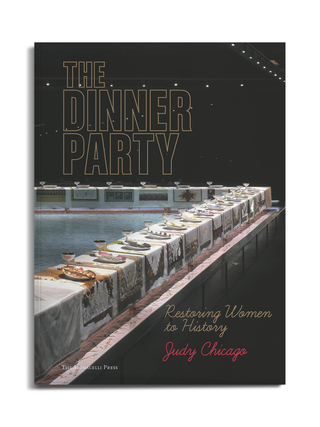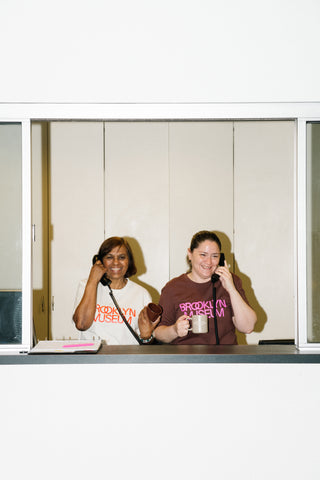

The Dinner Party: Restoring Women to History
- Unit price
- /per
The official publication celebrating Judy Chicago’s feminist art masterpiece, The Dinner Party installation at the Brooklyn Museum, and an introduction to outstanding women in history. A perfect companion to a revolutionary artwork, the book is a must-have for both long-standing fans of Judy Chicago’s oeuvre and young artists and women looking for reflections of themselves in the history of Western Civilization.
Hardcover
288 pages
8.05 x 1.25 x 11.4 in
ISBN: 9781580933896
Judy Chicago is an artist, author, feminist, educator, and intellectual whose career now spans four decades. Her influence both within and beyond the art community is attested to by her inclusion in hundreds of publications throughout the world. Her art has been frequently exhibited in the United States and internationally, and her ten published books have brought her art and philosophy to readers around the world.
The opening in March 2007 of the Elizabeth A. Sackler Center for Feminist Art at the Brooklyn Museum marks a key chapter in the history of this important artist, as it includes space specifically designed for the permanent installation of Chicago’s foundational work, The Dinner Party (1974–79). Not only a landmark in the artist’s long and productive career, the opening of the Elizabeth A. Sackler Center represents the first major step in the institutionalization of feminist art—and its rich, complex history—within the larger context of 20th-century art and culture.
Chicago pioneered Feminist Art and art education in the early 1970s, through unique programs for women at California State University-Fresno and later (with Miriam Schapiro) at the California Institute of the Arts. Demonstrating an openly female point of view through collaborative art, Chicago helped to initiate a worldwide Feminist Art movement. She created The Dinner Party, described in the recent 7th edition of Janson and Janson’s Basic History of Western Art as “a powerful icon for women’s liberation and independence,” in the mid to late 1970s with assistance from hundreds of volunteers, including both men and women.
In all her major collaborative projects, beginning with The Dinner Party and continuing through Birth Project (1980–85), Powerplay (1982–87), Holocaust Project: From Darkness into Light (1985–93), and Resolutions: A Stitch in Time (1994–2000), Chicago has chosen diverse and unusual media to fit not only her aesthetic, but also the personal, social, and political intentions of her imagery. Because of her gender politics and attention to social commentary, as well as her use of diverse styles and media, Janson and Janson’s history credits her not only for her role as a leader in the Feminist Art movement but also as a forerunner of the late-20th-century movement known as Postmodernism.
Adding product to your cart
